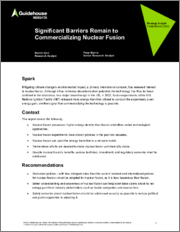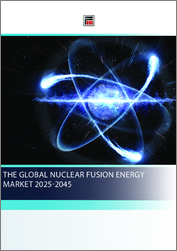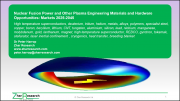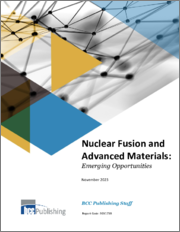
|
시장보고서
상품코드
1296109
핵융합의 상업화 : 여전히 남아있는 거대한 장벽Significant Barriers Remain to Commercializing Nuclear Fusion |
||||||
세계의 일부 지역에서는 지속적인 경제 성장을 위한 충분한 에너지 공급과 동시에 CO2 배출량을 크게 줄일 수 있는 명확한 전략을 수립하기 위해 고심하고 있습니다. 세계기상기구(WMO)는 현재 21세기 말까지 세계의 기온이 3-5도 상승할 것으로 예측했습니다. 이 예측은 2.0도의 지구온난화 목표와 더 야심찬 1.5도의 목표를 달성하기 위해서는 현재의 노력만으로는 충분하지 않음을 시사합니다.
핵융합은 무궁무진한 에너지 공급원이자 해결책이 될 수 있습니다. 이 기술을 현실화하기 위해 세계 각국에서 많은 노력을 기울이고 있지만, 아직 경제적으로 실현 불가능하고 상업화되지 않았습니다. 유망한 국제핵융합실험로(ITER) 프로젝트가 성공하더라도 원자로의 순에너지 이득과 평준화 전기요금(LCOE)을 고려하면 이 기술이 경제적으로 경쟁력이 있다는 보장은 없습니다. 핵융합이 경쟁력을 갖기 위해서는 그리드 패리티(Grid Parity)를 달성해야 합니다. 즉, LCOE가 전력망의 전력 가격과 같거나 그 이하가 되어야 합니다.
핵융합 기술의 실용화를 위해 극복해야 할 여러 가지 과제를 분석하고, 그린 에너지 수요의 증가에 대응하기 위한 핵융합의 중요성, 다양한 기술적 접근 방식, 최근 핵융합 산업의 돌파구, 수년간의 노력에도 불구하고 핵융합이 실현되지 않은 이유와 주요 대응책(민간 및 공적 자금에 의한 핵융합 산업의 재정 지원 등), 주요 이해관계자에 대한 중요한 제안 등의 정보를 정리하여 전달합니다.
목차
서문
배경
제안
핵융합 : 에너지 전환 분야에서의 관심 증대
핵융합 반응 : 개발된 4 종류의 어프로치
자기밀폐
관성 가두어 방식
MTF(Magnetized Target Fusion)
하이브리드식 핵융합
수십년간 조사의 끝에 나온 최근 획기적인 진보의 실현
노력에도 불구하고 핵융합은 아직 상업적으로 실현 가능하지 않다.
핵융합 에너지 : 넷 제로 목표를 달성하기 위해 신속히 행동할 필요성
민관 자금에 의한 핵융합 연구개발의 활성화
공적자금
잠재력에도 불구하고 핵융합 에너지는 복수의 면에서 과제에 직면하고 있다.
기술적 과제의 극복 : 핵융합 성공의 열쇠
투자자의 시점
핵융합을 촉진하기 위해 규제상의 우려가 완화될 가능성
핵융합 산업 : 핵융합에 대해 국민을 교육할 필요성
규제기관 : 핵분열 시설과 핵융합 시설의 차이를 고려할 필요성
KSA 23.07.11Some world regions are struggling to develop clear strategies for achieving substantial CO2 emissions reductions while providing energy supplies sufficient for sustained economic growth. The World Meteorological Organization currently predicts that global temperatures will increase by 3° C to 5° C by the end of the 21st century. This projection suggests that current efforts may not be enough to achieve either a 2.0‑degree global climate target, or the more ambitious 1.5-degree goal.
Nuclear fusion offers an inexhaustible supply of energy and could be a solution. Enormous global effort is going into making the technology a reality, but it is still not yet economically feasible and has not been commercialized. Even if the promising International Thermonuclear Experimental Reactor (ITER) project is successful, the technology is not assured of being economically competitive, considering the reactors net energy gain and the levelized cost of electricity (LCOE). For nuclear fusion to be competitive, it must reach grid parity, which only happens when its LCOE is equal to or below the price of power on the grid.
This Guidehouse Insights Strategy Insight reviews the significance of nuclear fusion in tackling the growing demand for green energy. It explains the differences between nuclear fission and fusion and looks at various technology approaches, recent breakthroughs in the fusion industry, and its persistent lack of traction, despite decades of effort. The study also examines the industry's financial support from private and public funding, its major challenges, and offers key recommendations for stakeholders.
Table of Contents
Spark
Context
Recommendations
Nuclear Fusion Gains Traction in the Energy Transition
Four Approaches Have Been Developed for Nuclear Fusion Reactions
Magnetic Confinement
Inertial Confinement
Magnetized Target Fusion
Hybrid Fusion
Recent Breakthroughs Came after Decades of Research
Despite Efforts, Nuclear Fusion Is Still Not Yet Commercially Viable
Fusion Energy Must Move Quickly to Aid Net-Zero Goals
Public and Private Funding Vitalized Nuclear Fusion R&D
Public Funding
Despite Its Potential, Fusion Energy Faces Challenges on Multiple Fronts
Overcoming the Technical Challenges Is Key to Nuclear Fusion's Success
Investors' Perspectives
Regulatory Concerns Could Be Loosened to Encourage Nuclear Fusion
The Fusion Industry Must Educate the Public about Nuclear Fusion
Regulators Must Consider the Differences between Fission and Fusion Facilities



















